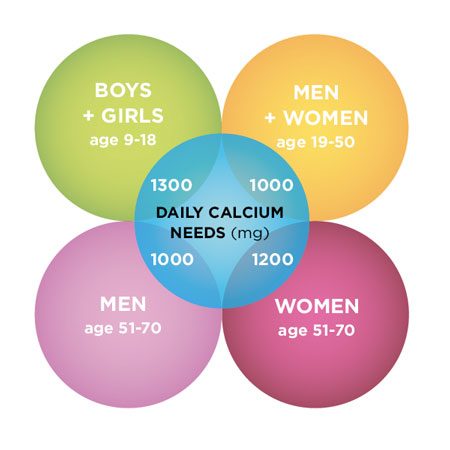Are you getting enough calcium?
Calcium is an essential nutrient to help protect against osteoporosis. Here’s how to ensure you’re getting enough

Source: Best Health Magazine, November 2012; Image: Thinkstock
Calcium is the most abundant mineral in our bodies. About 99 percent of it is used to keep our teeth and bones strong, but our bones also release some when our body needs calcium for muscle contractions, blood clotting and nerve function. This give-and-take is normal, but it’s vital to replace the calcium our bones are giving up.
Only about a third of the calcium we eat is absorbed, and we absorb even less as we age. Another downer: Calcium from foods that are high in oxalic acid (such as rhubarb, spinach and chard) is not absorbed well. Getting enough vitamin D helps absorption, as does eating high-calcium foods at mealtimes. Milk, yogurt and cheese are richest in calcium and absorbed fairly well, but since many adolescent girls and women aren’t getting enough, look to sources such as those listed below to help fill the gap. And talk to your doctor about whether you should take a supplement.
Amount of calcium in one cup (250 mL)
2% milk: 286 mg
Cooked soybeans (edamame): 261 mg
Cooked bok choy: 158 mg
Cooked mustard greens: 104 mg
Cooked kale: 94 mg
Cooked broccoli: 62 mg
Raw watercress: 41 mg
How much do you need?

This article was originally titled “Bone up!” in the November 2012 issue of Best Health. Subscribe today to get the full Best Health experience’and never miss an issue!




